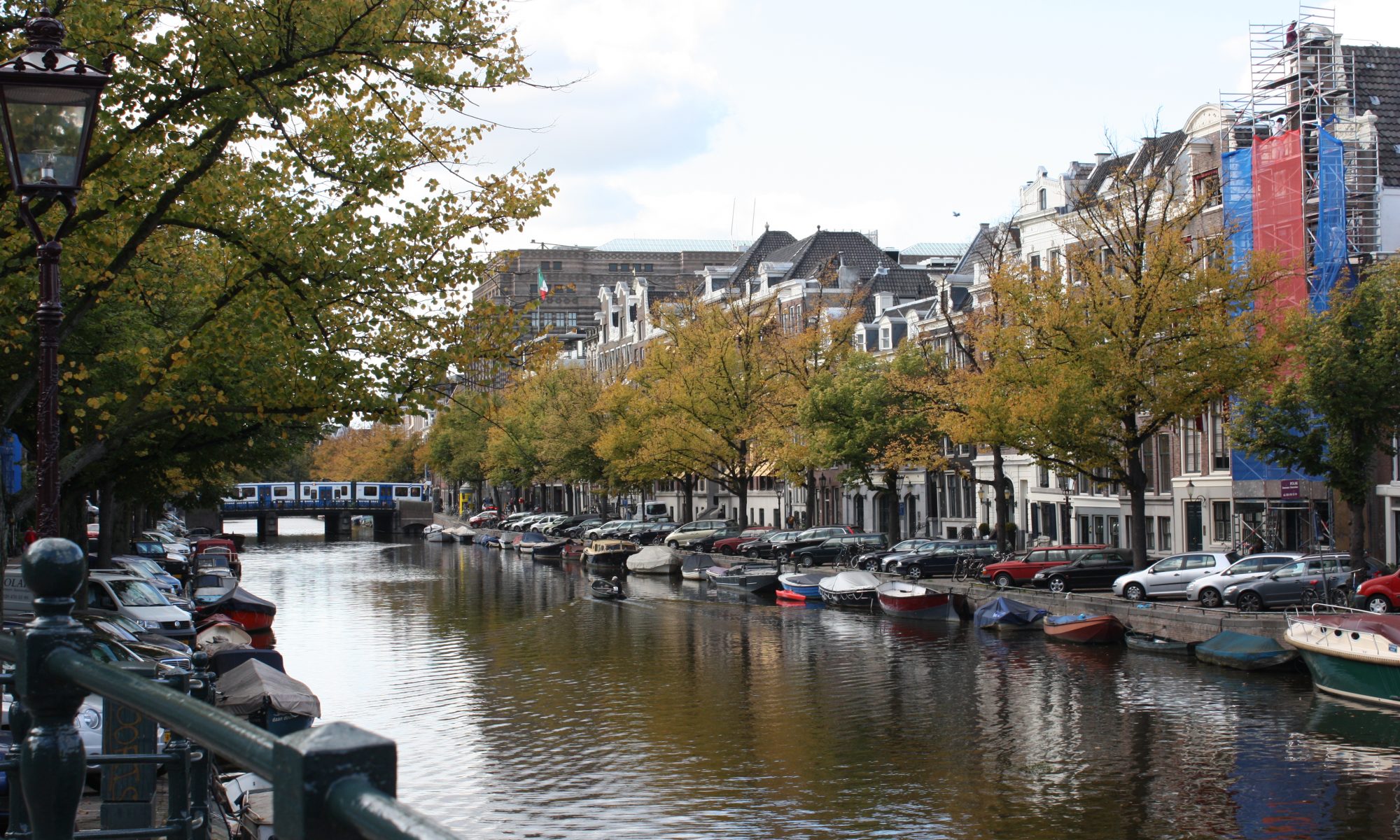Step Out – Urban Design Change Now (Amended)
Change is coming. Change is here. Oklahoma City has a Mayor just over one year into his first term and three new council members just took office (1/3 was actually appointed and then won election, if we’re being nitpicks). Edmond will be elected a new Mayor and new council members. A generational and community-building shift is happening. Along with these political changes are coming structural changes in the way we build, and live in, cities and suburbs. People are walking, biking, scootering (is that a thing?) and using transit more, and subsequently more attention is being paid to the infrastructure that enables (or inhibits, depending on the circumstance) this non-automobile mobility.
OKC urban design twitter (yeah, it’s a thing) has been up in arms as of late in relation to the lack of appropriate physical infrastructure in Oklahoma City, and in the urban core in particular. I do not disagree with any of the overall complaints – inadequate or nonexistent area lighting, no bike lanes, etc. – but I do think it absolves a main culprit of much of the carnage: inattentive, negligent, and/or vindictive automobile operators. We cannot ignore that people are driving around in multi-thousand pound metal boxes that are designed to protect the people inside, not the people outside. Drivers need to be held more responsible for their actions, and more people need to internalize the responsibility they take on when they step behind the wheel.
A recent study indicated that 31% of people surveyed (in Australia) “rated cyclists as less than human” (emphasis added). 31%! Auto drivers are mentally dehumanizing cyclists and non-drivers, and it is taking a physical toll on human life. In a somewhat related realm, drivers just do not pay attention. This thread from Matt Johnson (@Tracktwentynine), illustrates that, even in the presence of appropriate pedestrian infrastructure, it is inattentive drivers that can cause harm (click on the tweet and follow the informative thread).
https://twitter.com/Tracktwentynine/status/1111432805366427649
[A slight aside related to the Netherlands. I’ve read that the Dutch are among the happiest drivers, and they also have an extremely low bicycle-vehicle crash rate, especially compared to the U.S. The assumed reason is that 1.) they have great, separated infrastructure in many places, and 2.) almost everyone cycles, so when they do drive, they understand what to look for. (I’m writing this quickly, so I haven’t pulled my sourcing on this; hopefully I’ll get a chance to go back and source to real studies here).]
Until we get a handle (locally, statewide, and nationally) on driver behavior, it’s going to be tough to fix the current epidemic of increasing pedestrian and cyclist deaths. HOWEVER, that does not mean we can’t do some things to change for the better. Here’s a list of things I think OKC and its surrounding communities can do relatively quickly and cheaply (some requiring more political will than others, admittedly):
- Ban ALL right turn on red in the urban core and other commercial, walkable districts.
- Change all downtown traffic lights with pedestrian signals to automatically initiate the walk cycle, NOT requiring a beg button to be pushed.
- Utilize low-cost, city-permitted demonstration & trial projects, either funded publicly or by donation.
- Fix existing street lighting and begin to add more where needed.
- Paint continental crosswalks in all urban core areas (I’m especially thinking about Midtown and Uptown right now). Work to modify the Auto Alley crosswalks to be more visible.
- Install curb bump outs (paint w/ plastic delineators first, concrete as funds allow) whenever possible.
- Reduce all urban core turning radii to 5′.
- Adjust crosswalk locations, especially when designing new streetscapes. Multiple recent projects place the crosswalk 5-10′ from the beginning of the radius, which causes cars to stop across the continental striping and limiting pedestrian throughput. Many of these are done to accommodate drainage first, but creative ways exist to mitigate that stormwater need.
- Update the downtown parking zoning overlay to include an off-street parking maximum (there is no parking minimum requirement right now).
- Reduce the number of driving lanes from 4 (or more) to 3 (1 lane each way plus middle turn, if necessary) and add dedicated, physically separated bike lanes and on-street parking on ALL streets with an ADT less than 10,000. This includes, but is certainly not limited to, NW 6th, NW 5th, NW 4th, Shartel, and Main Street in downtown/Midtown.
- Study doing the same road diet for all streets with ADT between 10,000 and 20,000; or boulevards with 6 total lanes that can be reduced (Classen and Lincoln come to mind).
We can do things now. We don’t have to wait. Not everything will be so costly that it needs to be in MAPS4; we have the ingenuity and the best practices to follow, we just need the will to change.
All that said, I’m still torn between two competing thoughts right now. One is the infrastructurist mindset – we need to improve infrastructure (separate all modes) and add lighting, and everything will then be good. But I’m also aware that infrastructure takes time, and even appropriate infrastructure doesn’t help (see above). As a planner and engineer, being pro-infrastructure is good for my bottom line, to be honest. But, as an empathetic person, I note that we’re not being enough infrastructure fast enough to make it better for all users. Reading the book Bicycle/Race: Transportation, Culture, & Resistance recently opened my eyes to the fact that most cycling infrastructure is benefiting the few, not the many, and most often not the many that need it most. This is where changing driver behavior and mindsets is a crucial part. But how…? This is the tougher part for us to tackle, and it certainly will be a fight for the ages.
Paul the Radical
I doubt anyone I grew up with would peg me as a radical; I’m generally a passive person (maybe a little passive aggressive, I admit), content to remain neutral out of fear of displeasing someone. It is, therefore, a surprise to me that I would probably be considered a radical to many people in relation to my views about urbanism, walkability, and bicycles.
In the field of civil engineering, of which I’m registered in Oklahoma, I feel like a black sheep; in the field of planning, of which I’m a certified planner, I feel I’m apart from mainstream planners who cover a myriad of concepts and often appear concerned with the past and the now, not actually the future.
I’ve never been a cyclist; I have always loved the freedom of riding for pleasure and utility, not for exercise. I believe in cities as a tool for conservation, which many on the right find hard to understand, which causes confusion and likely deems me radical.
Christa and I choose to live in an urban neighborhood, far from many of our friends and our church, yet again a relatively radical undertaking. We take our vacation time, never holding much more than a week; apparently another radical thing in the U.S. How I’ve come to this radical nature, I do not fully know, but I have an idea.
A couple primary influences for my radical nature are my education, a foundational experience, and the growth of social media and my partaking in it, adding to personal growth and understanding. As I think I’ve stated before here, I believe, my education encouraged me to explore the world and always approach life with an inquisitive, critical understanding.
Calvin College and the University of Michigan are both fantastic institutions, and they both pushed me to grow my abilities, not just my knowledge base. My liberal arts-based engineering degree pushed my mind to explore as much as possible, not bog down in minutiae that would likely saddle me for life. Mikael Colville-Andersen notes in the introduction to his new book Copenhagenize: The Definitive Guide to Global Bicycle Urbanism, he came into bicycle urbanism “unencumbered by academic indoctrination.” Calvin instilled me in the understanding that my career should always be to learn and grow, that it was right to question the status quo. I feel free to most aspects of “academic indoctrination,” and with that I feel invigorated, but it also makes me appear a radical. Like Charles Marohn being questioned by his state license arm, via anonymous complaint, I often feel as though my questions and the search for truth are treated as personal attacks on other engineers, not as the search for truth and constant learning that I see them as. Questions aren’t personal, they are educational.
The rise of social media is treated differently among people. For me, I’ve used it to connect to a whole new world of influence, acquaintance, and friendship. Twitter opened the door for me to meet numerous people in Oklahoma City (too many names to mention now), for games of urban futbol, to discuss Strong Towns, to buy and sell homes, and much, much more. But beyond the local friendships, it has enriched my understanding and approach to learning about the forefront of urbanism, planning, and engineering. And, on top of simply reading from experts outside of my personal circle in Oklahoma, I can actually interact with people via Twitter, and discuss true best practices and real life issues. It’s truly eye opening. And it’s also radical. Via social media, and the related interactions and real-life face-to-face time (such as at NACTO’s Designing Cities conference), I am able to stay far ahead of the traditional learning curve that I see in planning and engineering circles.
AND, these people and organizations are pushing research and understanding into books and written products. Pick up their materials and read them, it’s worth your time. Right now, I’m reading Copenhagenize, and it’s worth the small cost to buy it. I really like following Mikael and his whole Copenhagenize team as they push for a fresh understanding of what is, is not, best practice. As as side note, one which should really require a fully separate post, is this: what we’re doing as “best practice” in many places, particularly in America, are really easy or minimal practices, not best. Many of my fellow engineers and planners are content to settle for the most basic design or a plan that will ruffle the fewest feathers. This doesn’t help us make fresh, great places, it helps us just make the status quo shinier.
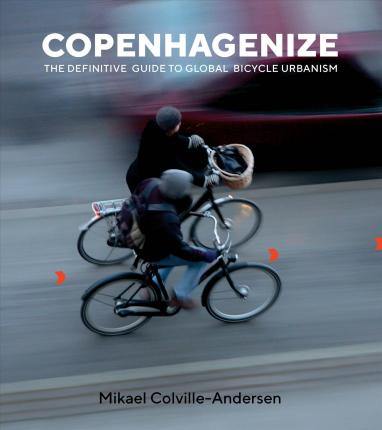
Another fantastic resource that I bought and read last year is Cycling Cities: The European Experience. It’s a book with a deep understanding of not just bicycle urbanism but the (relatively) recent history of cycling cities in Europe.
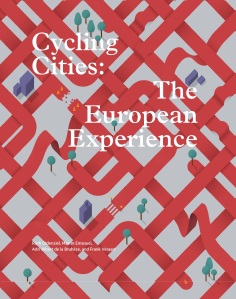
If you’ve made it this far in my text, thank you. And please note, if I seem radical to you, it’s only because I care deeply for the future. I am not in a war against (whatever you want to add here), and I am a search for the best life for everyone. If I question the status quo, it is not personal, but simply a method to move forward.
Finally, here are a few people/organizations that I follow, and who I have deep respect for in the various fields I find myself in (I don’t have space to name everyone, so here’s a start):
- Mikael Colville-Andersen
- Jeff Speck
- Charles Marohn
- Bill Schultheiss
- Angie Schmitt
- Modacity
- NACTO
- Congress for the New Urbanism
- Strong Towns
- StreetsblogUSA
p.s. If you want to listen to me ramble on about similar topics and my reasoning, take a listen to this The Topic is Yours episode: Paul the Plan-gineer.
p.p.s. For a deeper understanding of my love for my heritage, read my review of one my favorite books of the past few years: The Happiest Kids in the World.
Braum’s, Urbanism, and Strong Towns
Braum’s is causing quite the social media stir for its proposal to demolish an acre and a half of old buildings, and cause the businesses therein to move or close, in order to build a big parking lot and a new Braum’s. Being a Strong Towns advocate, I was curious about the fiscal and urban impacts of such a decision.
First, the fiscal impact. A project like this would likely receive no funding from OKC, and would probably have to pay some impact fees, so there’s not government love-lost there. I looked at the collective area on the wonderful Oklahoma County Assessor site, and found that the parcels in this block (1.5589 acres) were taxed a collective $7,306.37 in 2016. A relatively new Braum’s location at NW 164th St & N Pennsylvania Ave. in far north OKC was taxed $19,517.55 in 2016. As far as Oklahoma County is concerned, the Braum’s will be a better tax generator.
I do not have access to sales tax collection data, so this analysis is tougher. However, for Oklahoma City’s sake, I would guess that the difference between the collective current occupants and the proposed Braum’s is a wash. Classen Grill is generally open 7 am to 2 pm (changes slightly near weekends), HiLo Club is open 12 pm – 2 am daily, and Drunken Fry is open 4 pm – 2 am daily. Classen Grill generates sales tax for OKC and the state, while HiLo and Drunken Fry generate sales tax for OKC and the state and alcohol tax for the state and county. Charlie’s Jazz, Rhythm, and Blues produces sales tax as well. Braum’s would be open 6:30 am – 10:45 pm (ish) and generate sales tax all day.
Second, the urban impact. The current buildings are generally on or close to the right of way, with on-street parking and a relatively good street presence. The proposed Braum’s, however, is set far back from Classen Circle, with a very large parking lot taking up the space where multiple buildings now stand.
Personally, since I’ve never been inside any of the businesses that would be disrupted, I can only make claim to the urban argument. The proposed Braum’s as antithetical to the desired urban experience inside the urban core of Oklahoma City. Should the PUD rezoning move forward, I would much prefer a site plan that integrates the structure and parking into an urban footprint. I know it can be done. Look at the McDonald’s in Bricktown for an OKC example (if one must have a drive through).
Third, a word about historic preservation. Without a professional architectural and historical survey, I am hard-pressed to say anything here would, or should, be considered historic. Things are certainly historical, being over 40 years old (a general National Register of Historic Places threshold), but more detail is required before making a real determination. Many people have an attachment to the businesses inside, not necessarily the structures themselves. The HiLo Club is, to me, the most architecturally unique structure here, by far.
The Happiest Kids in the World
In late March, I caught a tweet from Chris Bruntlett, an urbanist and cycling expert in Vancouver, BC. He pointed out a new book that he was excited to read – The Happiest Kids in the World.
The topic and the context of the topic instantly piqued my interest. A book about parenting in the context of my ancestral homeland? Perfect. I immediately pre-ordered it and waited for its delivery. I buy many books (many more than Christa would like sometimes), but I rarely follow through with a full reading of a book. I’m happy to say that I actually read this entire book within a week. I also managed to take 6 pages of notes while reading, which is really too many to summarize in a single blog post.
My suggestion is to pick up a copy for yourself and read it. Now. But I will offer some context as to why it piqued my interest so, and also summarize some points about why I loved it.
First: Gezellig. I’ve loved this word since I first learned it during my first visit to the Netherlands in January of 2000. The word has no direct English translation – it encompasses a variety of themes of Dutch life. The book explains gezellig in two ways, the second of which is particularly poignant, gezellig is a feeling, not word:
Gezellig evokes feelings of coziness, warmth, belonging, love, happiness, security, contentment, safety and companionship.
[Gezellig is] the feeling you get when you’re sitting by the fire surrounded by loved ones, drinking hot chocolate and eating marshmallows.
The concept of gezellig runs deep in The Happiest Kids in the World. Making a gezellig life for our children is the means to the end; it is raising happy, independent, secure children.
Second: Some Dutch context about me. If you’re new to me, I must admit that I may have some personal bias toward agreeing with, and promoting, the Dutch life. I am 3rd generation Dutch-American, with both my father and mother’s families being Dutch. I grew up in Holland, Michigan; a solidly Dutch-American town (if the name didn’t give it away…). One could argue that Holland, MI is the most Dutch-connected American town (sorry Pella).
But knowing my personal history and potential bias, I was still surprised by how little I had connected my own childhood to that of a true Dutch childhood. My parents and many of my friends’ parents raised us in Dutch fashion. We ate hagelslag (and I still do); we freely roamed the neighborhood by bike and on foot, in creeks and on streets; we rode our bikes to Central Park grocery with free abandon. We were given rules and yet flexibility. The corollaries are impressive, even being thousands of miles and multiple generations away. To this, I say a hearty thank you to my parents and to many of the others in West Michigan.
Third: Family. The Dutch family unit is strong, regardless of the make-up. One of my favorite parts of the book relates back to hagelslag and why it’s important:
- It’s not about the chocolate, “it’s more about the fact that the Dutch eat breakfast as a family.”
- “In no other country do families eat breakfast together regularly as they do in the Netherlands.”
- “But the real point is that they put as much value on the idea of starting the day together around the breakfast table, a calming and bonding experience for all the family.”
- Hagelslag is about self-confidence – “my three-year old son is content and proud to be able to choose and prepare his own breakfast.”
- “‘We believe it’s crucial to take the time to have breakfast and dinner together, so we can listen to each other, share our experiences, talk about what’s going on in the world and put it into a wider context,’ Carel van Eck, a Dutch father of two, tells me.”
- “Sitting down around the table as a family is less about what’s on the table than the fact of sitting around it to talk. A family dinner is about gezelligheid. Many Dutch parents see it as a basic rule: The family eats together.” (Emphasis added)
Fourth: On bike riding, specifically:
- “The Dutch Union of Cyclists promotes cycling ‘because it makes you happy and improves your health.'”
- Cycling teaches grit – “All-weather cycling is a truly character-forming experience.”
- No need for helmets – “children are more careful when they don’t feel protected.” AND “cyclists who do not wear them have been found to act more cautiously in traffic.”
- “Best mode of transport for all.”
Fifth: Being a Dutch kid is deeply intertwined with being outside, in active transportation, play, and exploration. This is where Americans will have the toughest time adopting a Dutch parenting style. Our urban and suburban environments are dominated by hard spaces and automobiles. I was able to be relatively “Dutch” as a child because we had slow streets, ample open space nearby, and willing parents. Where we live now, I wouldn’t trust my kids roaming free, not because I don’t trust them, but because I don’t trust drivers. The book talks about risk and relativism, which is a thought process I’ve long been intrigued by since I took a risk/benefit analysis class in grad school. Americans have developed strong fears over events that occur rarely (random kidnapping), and normalized events that occur frequently (30,000+ auto collision deaths/year).
Sixth: Being Dutch is so much more than bike riding and eating chocolate sprinkles. I can’t really begin to summarize all of my notes without just regurgitating the entire book. Here’s a few of my favorite things:
- Doe maar gewoon dan doe je al gek genoeg – Just act normal, that’s crazy enough.
- Happiness is life satisfaction – “Schools here invest more energy in motivation than in achievement.”
- “A teacher is a better judge of a child than a test.”
- “Punishment will cause a child to adapt their behavior to avoid the punishment but not to learn what they have done wrong.”
- “Going on vacation is an integral part of life.”
- Camping. The Dutch LOVE camping – this was also still relevant to my Dutch family and friends in Holland, MI. We took weeks-long camping trips together across the US and Canada, and trips around Michigan as well.
- Quoting Banksy: ‘A lot of parents will do anything for their kids, except let them be themselves.’
- “The Dutch believe in learning for its own sake and in order to broaden the mind, not just to pass exams.”
For Sale, Again
For those not aware, we took our house off the market, had our wood floors refinished, and added a half bath on the first floor. Our house is back on the market again. Spread the word!
Housing Update
We’ve had a lot of people come through our house, be it via Open House or scheduled appointments. But it’s a tough time of year to sell a house. That means you might see it disappear off the market for a little while this winter. Still targeting Edmond and a house we like… but we’ll see what happens.
The End, and a Beginning
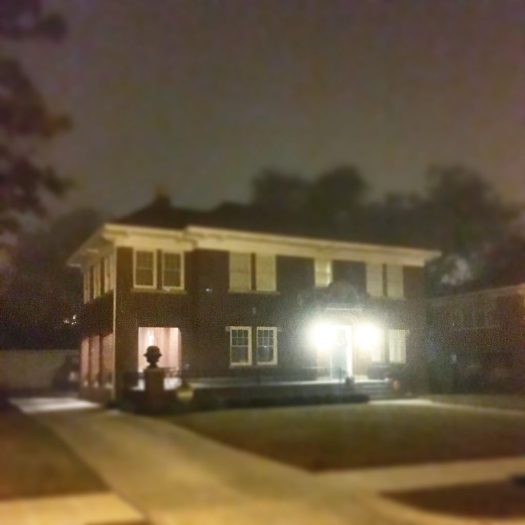
In July of 2012, we embarked on a journey of blood, sweat, tears, and joy. We acquired a magnificent historic home which had been empty and neglected for nearly 5 years. Our aim was to bring it back to life; not necessarily in the same state as before, but to breathe into it a new era of growing a family and being neighborly.
As Christa noted to me, this is the house where we truly learned to be adults. Addison was just shy of 1.5 when we bought it, and will be over 5.5 when we sell it (hopefully); Kate has spent the first 21 months of her life in this house. We learned how to make good connections with our neighbors, something we shied away from in Mesta Park when we lived there (other than our immediate neighbors on our block).
We learned that, working as a team, can really accomplish hard work when we try. And I also learned that I am not cut out for certain activities, and it’s best to leave things to experts when possible (tiling the master shower is one big item that comes to mind).
We took our 3,250 square foot home from dilapidated to beautiful, externally and internally. Through Christa’s skills, we achieved a beautiful interior and have only begun to decorate and fill it out. Some of the most drastic change is what we now cannot see: we replaced the plumbing and electrical systems, we installed a new HVAC system, and insulated the roof and walls. Our energy bills remained constant from our previous 1,290 square foot home to our new one, a fete of which I am quite proud.
We love being near downtown Oklahoma City; close to everything in a walkable area with non-auto connections to so much vibrant life. However, we also have chosen to spend much of our time in Edmond. We have made our church home at Edmond Church of Christ. We now send Addison to Oklahoma Christian Academy (next door to our church), and Addison plays YMCA soccer with her church friends in Edmond as well. Because of church, many of our closest friends also live in Edmond.
All of this sums up to equal spending far too much time in our car, driving to and from Edmond essentially 6 days a week, sometimes all 7. I love a good road trip, but I hate extraneous city driving. Driving is likely the most dangerous activity most Americans subject themselves to daily, and the less I do it with our kids in the car, the better I’ll feel. If we have to drive somewhere daily, I’d rather it be to work, with the kids in the car as little as possible and only one trip, instead of a massive triangle twice a day, like we do now.
This Friday morning, our friend and real estate agent, Gary, will be listing our home for sale. We have a home in mind in Edmond, but we’re also open to options should that not work out. Being the urbanists that we are, finding a place in Edmond is not easy… but I think we’re on a path to a place that fills most needs: close to school, close to church, close to friends, closer to Spring Creek and downtown. It will also enable us to be more stable financially; you might say we’re house rich, cash poor right now. Having a huge, amazing home isn’t worth making other ends of your life suffer because paying the mortgage and home equity loan suck most of your salary away each month. We were able to take an empty, suffering house and make it into a home, and now we’ll be able to sell that home (Lord willing) and use our proceeds to downsize our mortgage, and increase our giving, saving, and moment-making (travel).
We’ve loved our time in Lincoln Terrace. We’ve made new friends, and in particular we had incredible neighbors right across the street that we will miss dearly. We will miss being close to downtown, but look forward to being able to be closer to friends, church, school, and the businesses that we like but do not frequent as much as we’d like (particularly Evoke, for instance).
In the end, a house is only a temporary, physical place that we don’t take with us when we pass. Our lives are made of the moments we make; and we want to make more moments outside of a car.
Sunday Evening Stroll
Christa and the girls are in Texas for the week visiting family. This means that I can catch up on sleep and do some things that I might not have time to do.
Sunday evening, I parked the car in Automobile Alley just after sunset and took an evening stroll through Midtown/Auto Alley. Now, I know Sunday nights aren’t the nights that you’d expect activity, but nowadays you’d think there would be people about, especially when the temperature was a beautiful 73.
I was wrong.
The major activity nodes in Midtown and Auto Alley were bustling, but there was little to no activity elsewhere. Walking the area felt like a wasteland. It’s an eerie feeling. I passed about 4 people in my hour spent walking (7:45 – 8: 45 pm). One was leaving the Bleu Garten area with a Bible in his hand (I assume after evening at Frontline). Another was smoking a ciggarette at the OSHA housing at 9th & Robinson, and the other was a couple that appeared to be visitors (I saw them taking photos and studying the Spokies station at 9th & Broadway).
The only other people I saw were specifically headed from their activity node to their cars – leaving Bleu Garten, leaving The Garage and leaving Fassler Hall/Dust Bowl.
Maybe it’s because we’re a bit walled off in Lincoln Terrace, and I don’t get out as much as I used to, but the lack of public activity was striking to me. Midtown/Downtown still has quite a long way to go to have a truly active street life. We are still generally in a drive point-to-point mode in this area – drive from your apartment/house to a parking lot and walk as short a distance as possible. I did see a few people on bikes, but they were generally road bikes, not cruisers…
The full occupancy of the Metropolitan, the Edge and the Lift will help add population density, but when you look at map, they are generally on the outside of the district. OKC will need to improve the walk/bike infrastructure between these living areas and the activity areas to help build a true walkable experience.
Another note, certain streets in this area still need pedestrian lighting improvements. NW 8th between Broadway and Robinson in particular felt dark – this street will be a critical connection for OCU Law students to head over to Hideaway & other establishments in Auto Alley when they need a study break. N Robinson between 10th & 11th also felt extremely dark – Frontline’s decorative lanterns were on along 10th, but not along Robinson. Also, when Packard’s is closed, the corner really feels empty and dark.
All that said, OKC has come a LONG way since I moved here 10 years ago this June. It is absolutely amazing how much change we’ve seen in the core, and amazing knowing how much is coming and could come.
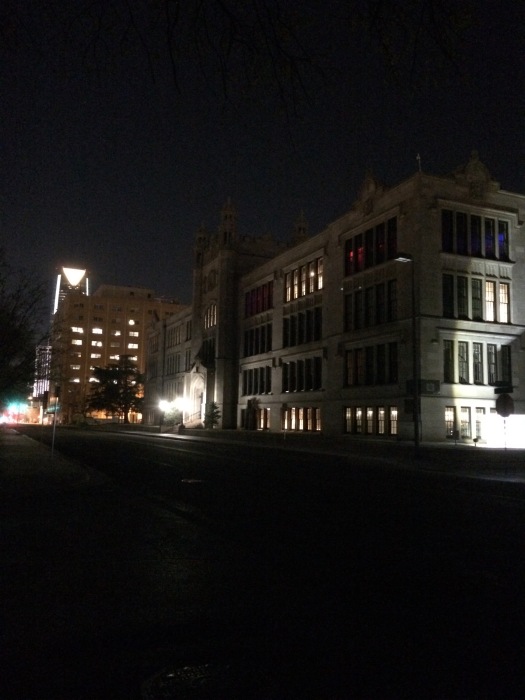
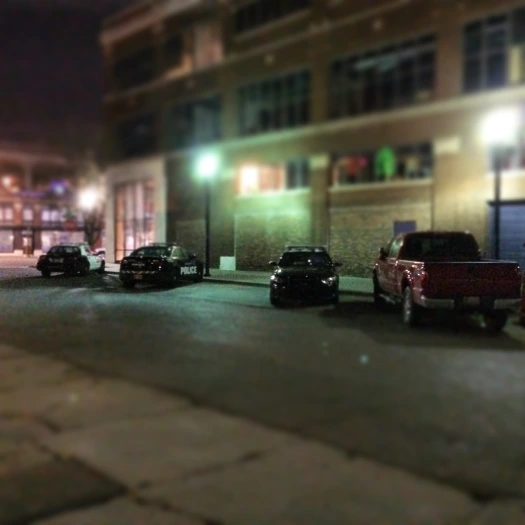
I Support Alternative D – My Comments to ODOT
The following text is what I submitted to ODOT et al (Mayor, Councilman, FHWA). I didn’t spent as much time on the comments as I would have liked, but hopefully my points get through.
Thank you for accepting my comments regarding the proposed Crosstown Boulevard. I fully support Alternate D, as I believe it will most adequately support future development in downtown Oklahoma City. Alternate C is a minimally acceptable option, but in its current form is extremely limiting in its development potential and in promoting or encouraging multi-modal use. Alternatives A and B should not receive any consideration from ODOT, The City of Oklahoma City or FHWA as they do not promote development or multi-modal use.
I have the following comments about the process and the methods by which ODOT appears to support Alternative C:
First, the public comment period for this Alternative analysis is too short. Two weeks is too short to garner appropriate input on such an important piece of Oklahoma City’s future.
Second, the only public meeting for the Alternative analysis was ill-timed during a Wednesday evening on which many people attend churches and the Thunder were having a playoff game. Additionally, this meeting was held as an open house, with no information provided prior to the meeting for people to become educated to ask questions.
Third, no information was provided publicly regarding traffic studies and other engineering and planning input into the final four Alternatives. People that were able to attend the open house (see point above) were able to ask such questions, but those who could not attend were not able to. The only information I’ve seen was provided via The Oklahoman.
I have the following comments about the ranking system and choice of preferred Alternative:
First, the scoring asserts that Alternative D does not meet local planning preferences but that Alternative C does fully. This is a false assumption that should have been vetted through Oklahoma City’s Planning Department and possibly the Planning Commission and City Council. The Core to Shore plan is a guiding document and is not intended to be set in stone, so to speak. It contains conceptual renderings that are intended to show the spirit of the City’s goals. Furthermore, one of the goals of the plan was to increase development potential in this area once I-40 was moved. Alternatives A, B and C do NOT meet this goal. The only Alternative that fully meets this is Alternative D, because it leaves the most developable land free.
Second, the traffic counts, provided only through the media, indicate that initially ODOT projected 58,000 vehicles per day the day it would open, and then 94,000 vehicles per day by 2040. The Oklahoman reports that ODOT now suggests 13,000 vehicles per day the day it would open and then 27,850 vehicles per day in 2040? If these lower projections are accurate, it fully reinforces that the existing grid pattern can easily handle the vehicle load. Per FHWA and other studies, an appropriately designed three lane (1 lane of travel each direction with center turn lane) can handle upwards of 20,000 vehicles per day (some even reporting 24,000 vehicles per day works efficiently). The area around the old Crosstown (the proposed Crosstown Boulevard area) can easily absorb these vehicle counts.
Third, the assumption that Oklahoma City needs a through-boulevard is an incorrect assumption even from a traffic engineering standpoint. The point of this boulevard (Alternative D, the grid) should be the delivery of people to and from downtown, rather than that of creating a thoroughfare. Oklahoma City does not need an I-40 bypass through downtown/Core to Shore; if necessary, the grid could easily supply this need.
Finally, given whatever Alternative is chosen, it should be designed to the standards of the National Association of City Transportation Officials (NACTO), not to the American Association of State Highway Transportation Officials (AASHTO) standards (aka the Green Book). NACTO’s standards, known as the Urban Street Design Guide, have been adopted by numerous city, county and even state bodies across the United States and are the most appropriate standards for street design in an urban area.
In summary, I believe Alternative D will provide the City and State with the largest return on its investment in the long term. Alternative D will leave the most developable land and allow the streets to be built, or rebuilt, to much more multi-modal standards. The southern downtown/Core to Shore area needs to be walkable, bike-able and transit-friendly, on top of allowing vehicular access.
Thank you for taking the time to accept my public comments.
